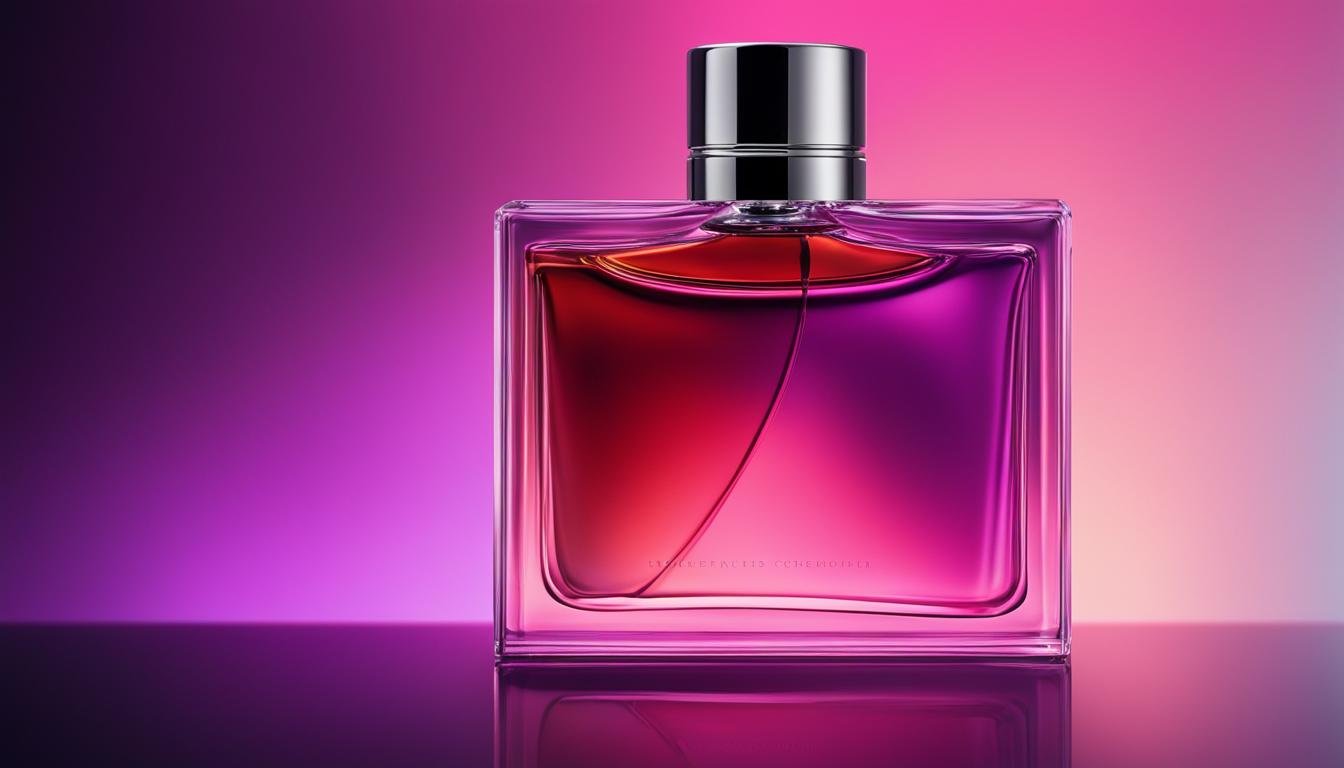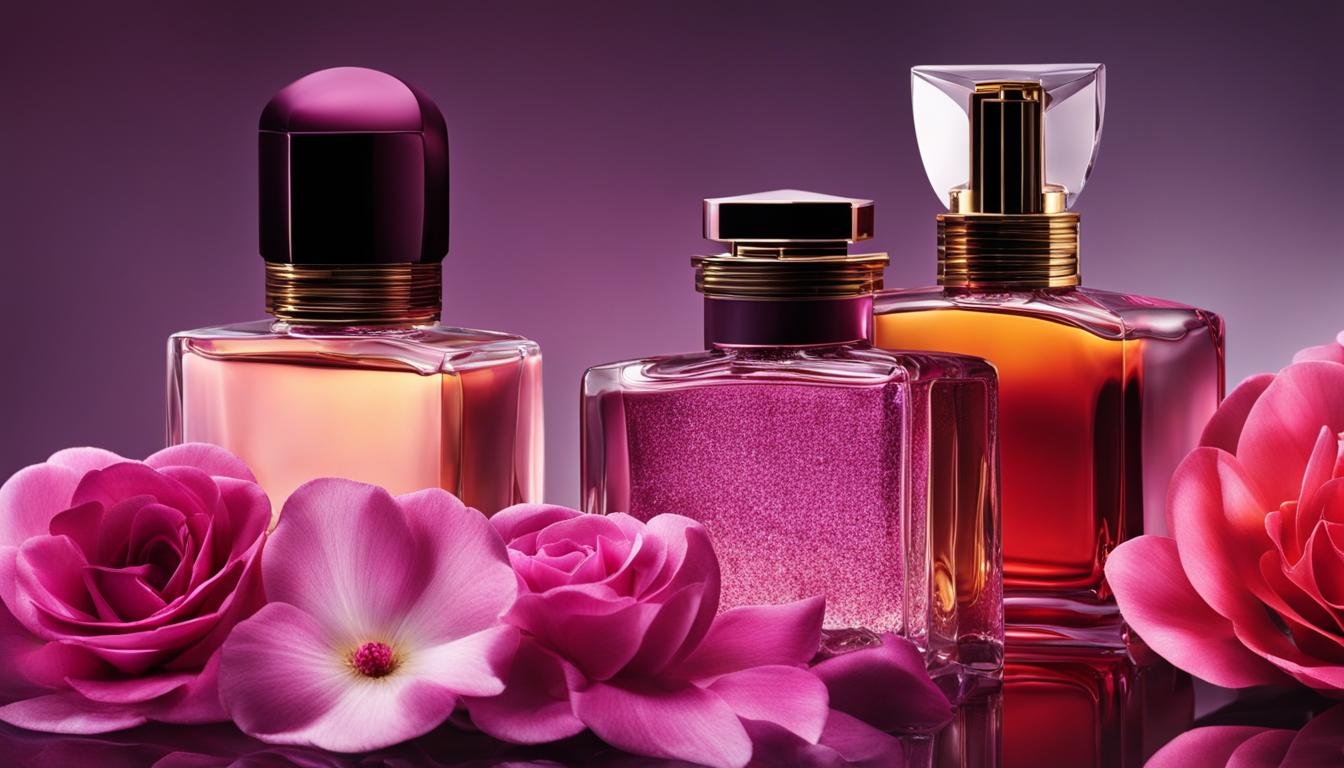Blog
Understanding Different Levels of Perfume: A Friendly Guide
As an Amazon Associate I earn from qualifying purchases.
Welcome to my comprehensive guide to understanding different levels of perfume! As a perfume lover, I’m excited to share my knowledge about the various fragrance concentrations available in the market. Perfumes come in different forms, and it’s essential to know the difference to pick the right scent that suits your style and occasion.
Perfumes are available in different levels of fragrance concentration, including eau de parfum, eau de cologne, eau fraiche, and extrait de parfum. Each concentration level has a unique composition and aroma, and their intensity and longevity vary. Knowing the difference between them can help you pick the right scent for your needs.
In this guide, we’ll explore the fascinating world of perfumes and delve into different levels of fragrance concentrations. Whether you’re new to the scent game or are a seasoned fragrance enthusiast, this guide will help you navigate the different fragrance concentrations and choose the perfect perfume for any occasion.
Key Takeaways:
- Different levels of fragrance concentration determine the intensity and longevity of a perfume.
- Eau de parfum, eau de cologne, eau fraiche, and extrait de parfum are the most popular perfume concentrations.
- Understanding fragrance concentrations can help you choose the right scent for any occasion.
Exploring Fragrance Concentration Levels
Perfumes come in a variety of fragrance concentration levels, and these levels determine the intensity and longevity of the scent. In this section, I’ll explain the different levels of fragrance concentration, ranging from the highest to the lowest. This will help you choose the right fragrance concentration that fits your desired level of scent intensity and longevity.
Highest Fragrance Concentration: Extrait de Parfum
Extrait de Parfum has the highest fragrance concentration, typically containing 20-30% fragrance oils. Due to this high concentration, only a small amount is needed to create an intense and long-lasting scent, usually lasting for 6-8 hours.
High Concentration: Eau de Parfum
Eau de Parfum has a lower fragrance concentration than Extrait de Parfum, typically containing 15-20% fragrance oils. It is perfect for those looking for a longer-lasting fragrance than Eau de Toilette but not as strong as Extrait de Parfum. It can last for approximately 4-5 hours.
Medium Concentration: Eau de Toilette
Eau de Toilette has a medium fragrance concentration, typically containing 5-15% fragrance oils. It is a suitable option for those seeking a lighter scent that doesn’t last as long as Eau de Parfum or Extrait de Parfum. It usually lasts for about 2-4 hours.
Low Concentration: Eau Fraiche and Eau de Cologne
Eau Fraiche and Eau de Cologne have the lowest fragrance concentration, typically containing 2-4% fragrance oils. They offer a subtle fragrance that doesn’t last as long as the other concentrations. Eau Fraiche is the lightest and lasts for only 1-2 hours, while Eau de Cologne offers a slightly longer-lasting fragrance, up to 2-3 hours.

Now that you know about the different fragrance concentration levels, you can choose the right concentration that suits your personal preferences and occasions. Remember to consider the intensity and longevity of the fragrance when making your decision.
Understanding Different Types of Perfumes
Perfumes come in various types, each offering a unique composition and aroma. Understanding the different types of perfumes can be helpful when selecting a fragrance that suits your style and mood. Here are the main types of perfumes:
| Type | Concentration | Description |
|---|---|---|
| Eau Fraiche | 1-3% | A refreshing and light fragrance that lasts up to an hour. The scent is mostly made up of water and alcohol, with a lower concentration of essential oils. |
| Eau de Cologne | 2-4% | A traditional fragrance with a citrusy scent. It is perfect for daytime wear due to its lightness and refreshing effect. The fragrance lasts up to two hours. |
| Eau de Toilette | 5-15% | A popular type of perfume that has a higher concentration of essential oils than eau fraiche and eau de cologne. It is ideal for everyday use and lasts up to three hours. |
| Eau de Parfum | 15-20% | A long-lasting fragrance with a higher concentration of essential oils than eau de toilette. It is perfect for special occasions and can last up to five hours. |
| Extrait de Parfum | 20-30% | A luxurious, highly concentrated fragrance that is perfect for evening wear. It has the highest percentage of essential oils and can last up to twelve hours or more. |
| Parfum Extrait | 30-40% | The most concentrated and expensive type of perfume. It is a powerful fragrance that lingers on the skin for hours, making it perfect for special occasions. |
| Parfum de Toilette | 10-20% | A classic and refined fragrance that has a higher concentration of essential oils than eau de toilette, but lower than eau de parfum. |
In addition to the concentration level, the scent of a perfume also depends on the type of fragrance notes used. Different types of notes create unique fragrance families, such as floral, oriental, and woody. The following are the most common types of fragrance notes:
- Citrus notes: These include scents such as lemon, bergamot, and grapefruit, and are refreshing and uplifting.
- Floral notes: These include scents such as jasmine, rose, and lavender, and are feminine and romantic.
- Woody oriental notes: These include scents such as sandalwood, cedarwood, and patchouli, and are warm and sensual.
- Green notes: These include scents such as grass, leaves, and herbs, and are fresh and natural.
Now that you have a better understanding of the different types of fragrances and concentration levels, you can choose the perfect perfume that reflects your style and personality.

Decoding Fragrance Notes
Have you ever wondered how perfumes are made? The answer lies in the combination of different scent notes. Fragrance notes determine the overall fragrance profile and how the scent evolves over time. In this section, we’ll break down the concept of fragrance notes and explore the different types of notes that exist in perfumes
Understanding Fragrance Notes
Fragrance notes are the individual scents that make up a perfume. These notes are divided into three categories: top notes, middle notes, and base notes.
- Top notes: These are the initial scents that you smell when you first apply the perfume. They are often fresh and light, and they evaporate quickly. Citrus notes, such as bergamot and lemon, are common top notes in perfumes.
- Middle notes: Also known as “heart notes,” these scents emerge once the top notes have evaporated. They are the main body of the fragrance and last longer than the top notes. Floral notes, such as rose and jasmine, are common middle notes in perfumes.
- Base notes: These are the scents that linger after the middle notes have faded. They are often rich and warm, and serve to anchor the fragrance. Woody notes, such as sandalwood and patchouli, are common base notes in perfumes.
Understanding the different fragrance notes can help you choose a perfume that suits your personal style and preferences.
The Dominant Notes
In some perfumes, one note may be more dominant than the others. This note is often referred to as the “dominant note.” Dominant notes can be found in any of the three categories of fragrance notes, depending on the composition of the perfume.
For example, if a perfume has a dominant floral note, it may be classified as a floral fragrance even if there are woody or citrus notes present as well.
Common Fragrance Notes
Now that we’ve covered the three categories of fragrance notes, let’s take a closer look at some common fragrance notes and the scents they impart.
| Note | Description | Examples |
|---|---|---|
| Citrus Notes | These notes are fresh and zesty, often with a hint of sweetness. | Bergamot, lemon, grapefruit |
| Floral Notes | These notes are often sweet and feminine, with a range of scents from light and airy to rich and intense. | Rose, jasmine, lavender |
| Woody Notes | These notes are warm and earthy, often with a hint of spice. | Sandalwood, cedarwood, patchouli |
| Oriental Notes | These notes are exotic and often feature warm, spicy scents. | Cinnamon, vanilla, musk |
| Green Notes | These notes are fresh and crisp, often reminiscent of grass or leaves. | Green tea, vetiver, basil |
Keep in mind that these notes can be combined in various ways to create unique fragrance blends. Some perfumes may feature a single note prominently, while others may have a complex blend of notes that work together to create a multi-layered fragrance.
Now that you understand the different fragrance notes, you can choose a perfume that suits your preferences and personality. Whether you prefer a light and fresh citrus scent or a warm and earthy woody fragrance, there’s a perfume out there for everyone.
Conclusion
As I wrap up this guide, I hope you’ve gained a better understanding of different levels of perfume and fragrance types. Knowing the differences will help you find your signature scent – the perfect fragrance that resonates with your personal style.
Remember that the longevity of the fragrance depends on the concentration you choose. If you prefer a long-lasting fragrance, go for eau de parfum or extrait de parfum.
There are different types of fragrances, including eau fraiche, eau de toilette, and parfum extrait, among others. Explore each one to find the perfect scent for any occasion.
Lastly, don’t be afraid to try fragrance blends that encompass a variety of notes. Finding the right fragrance is a fun and exciting journey that I hope you’ll enjoy.
Thank you for joining me on this voyage of fragrance discovery. Happy scent shopping!
FAQ
What are the different levels of perfume?
The different levels of perfume include eau de parfum, eau de cologne, eau fraiche, and extrait de parfum.
How do fragrance concentration levels affect the scent?
Fragrance concentration levels determine the intensity and longevity of a perfume. Higher concentration levels result in a stronger and longer-lasting scent.
What is the difference between eau de toilette and eau de parfum?
Eau de toilette has a lower concentration of fragrance oils compared to eau de parfum, resulting in a lighter scent. Eau de parfum has a higher concentration, making it more potent and longer-lasting.
What are the main fragrance types?
The main fragrance types include eau fraiche, eau de toilette, eau de parfum, extrait de parfum, parfum extrait, and parfum de toilette. Each type has different concentrations and characteristics.
What are fragrance notes?
Fragrance notes refer to the different scents that make up a perfume. They are categorized into top notes, middle notes, and base notes, which combine to create the overall aroma.
Amazon and the Amazon logo are trademarks of Amazon.com, Inc, or its affiliates.


